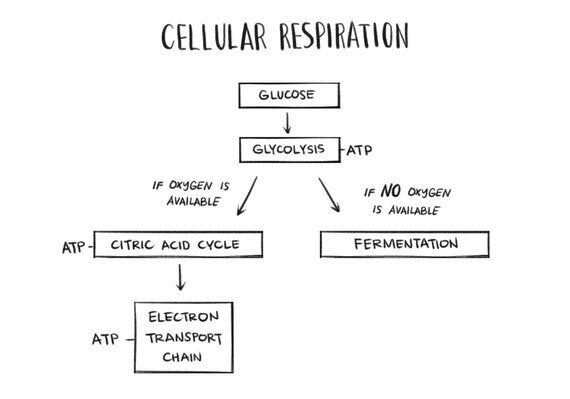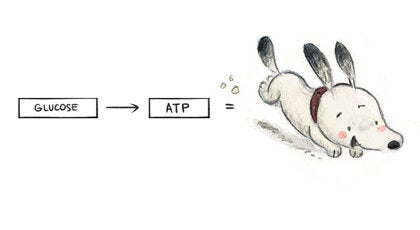Carbohydrates, in particular simple sugars are often accused of 'feeding cancer cells'. This type of generalization may be appealing for those seeking alternative cancer therapies or the tabloid newspapers but they oversimplify a highly complex area.
Let's try to simplify the biochemistry and physiology involved in order to understand where the idea that 'avoiding carbohydrates can starve cancer' comes from.
Pretty much all the carbohydrates your dog eats get broken down into smaller building blocks called monosaccharides (or simple sugars) - these are the most basic units of carbohydrates. The most important monosaccharide and also the one that relates to the 'cancer-feeds-on-sugar' myth, is glucose. Glucose provides energy for your dog so she can enjoy her walks, chase her tennis ball or learn a new trick. In fact, all living cells, cancerous or not, use glucose for energy.
However, just because your dog has eaten a good meal and there is plenty of glucose in her body, doesn't mean the energy is ready for use. Once inside the cells, glucose needs to be converted to adenosine triphosphate (ATP). ATP is a molecule that stores and releases energy as required by the cells. Think of ATP as an energy currency, i.e. the more ATP the more energy. Because ATP is so important, the body has three ways in which cells can convert the glucose into ATP.
- Glycolysis
- Citric acid cycle
- Electron transport chain (ETC)
Glycolysis does not require oxygen whereas the citric acid cycle and ETC only happen when oxygen is available.

The Warburg effect
In the early 1920's German physiologist, Otto Warburg, looked into glucose metabolism in cancers and correctly observed that cancer cells produce energy predominantly by glycolysis - even when enough oxygen was present. This is in contrast to healthy cells which generate most of their energy using the citric acid cycle or ETC.
Remember, for your dog to use glucose as energy it has to be converted into ATP.

In terms of energy output and efficiency, glycolysis produces 2 ATP's per glucose molecule whereas the citric acid cycle and ETC produce 30-34 ATP's per glucose molecule. That's a huge difference in energy!
Glycolysis is not a very efficient method of energy production and as a result the amount of glucose used by cancer is very high - hence the idea that cancer thrives on sugar. The inference, of course, is that if you limit the sugar you will limit the cancer.
But since Warburg made his discovery, a great deal more has been learned about the biology of cancer as well as normal biology. Although large amounts of glucose are often used by cancer cells, it is not always the case. Normal cells such as those of the immune system and stem cells also can use large amounts of glucose and yet they are not cancerous.
This lack of consistency is one of the reasons cancer is so complex and difficult to treat. Cancer cells are not identical to each other and researchers are still working to understand the differences in energy usage in cancer cells as compared with healthy cells.
It is also important to know that like us, your dog's body doesn't choose which cells get the glucose and which get starved of glucose. Plus the cells don't distinguish between glucose from various food sources.
The key to control glucose uptake
When the broken down carbohydrates get absorbed into your dog's bloodstream the blood sugar levels increase. In response, the pancreas releases insulin, which travels throughout the blood stream, and performs several important jobs including signaling glucose to enter cells where it can be used for energy.
Some types of cancer cells have plenty of insulin receptors, making them respond to insulin's ability to promote growth more than normal cells.
But that's still a far cry from saying that carbohydrates cause or feed cancer or to claim that cancer can be starved to death by avoiding carbohydrates. It is certainly advisable to avoid foods with a high Glycemic Index (GI) to help keep your dog's blood sugar and insulin levels in a healthy range and help control weight as part of an overall healthy diet. But the elimination of carbohydrates all together can backfire.
When a dog food is low in carbohydrate it is usually exchanged for fat and not all dogs can tolerate too much fat. It's really important to consider the entire picture and the whole dog - not just the condition.
Kristina is certified in Advanced Canine Nutrition. Her journey into canine nutrition started out of love for an old rescue dog who was not responding to traditional medicine.
She provides consultations on general canine nutrition and home prepared diets working closely with a wide variety of vets. Kristina also write articles on canine nutrition and care for many publications. You can visit her at: Elmoskitchen.com
In 2014 she launched her very first App for all dog lovers called Doglicious which allows users to look up over 220 'human' foods to find out whether they are safe or harmful to their dogs